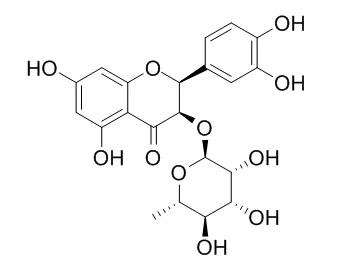A cell-permeable membrane, as typified by Transwell insert Permeable Supports, permit accurate repeatable invasion assays, has been developed as a tool for screening immunological active components in Smilacis Glabrae Rhizoma (SGR).
METHODS AND RESULTS:
In this research, components in the water extract of SGR (ESGR) might conjugate with the receptors or other targets on macrophages which invaded Transwell inserts, and then the eluate which contained components biospecific binding to macrophages was identified by HPLC-ESI-MS(n) analysis. Six compounds, which could interact with macrophages, were detected and identified. Among these compounds, taxifolin (2) and astilbin (4) were identified by comparing with the chromatography of standards, while the four others including 5-O-caffeoylshikimic acid (1), neoastilbin (3), Neoisoastilbin (5) and isoastilbin (6), were elucidated by their structure clearage characterizations of tandem mass spectrometry. Then compound 1 was isolated and purified from SGR, along with 2 and 4, was applied to the macrophage migration and adhesion assay in HUVEC (Human Umbilical Vein Endothelial Cells) -macrophages co-incultured Transwell system for immunological activity assessment. The results showed that compounds 1, 2 and 4 with concentration of 5μM (H), 500nM (M) and 50nM (L) could remarkably inhibit the macrophage migration and adhesion (Vs AGEs (Advanced Glycation End Produces) group, 1-L, 2-H and 4-L groups: p<0.05; other groups: p<0.01). Moreover, 1 and 4 showed satisfactory dose-effect relationship.
CONCLUSIONS:
In conclusion, the application of macrophage biospecific extraction coupled with HPLC-ESI-MS(n) analysis is a rapid, simple and reliable method for screening immunological active components from Traditional Chinese Medicine. |






 Cell. 2018 Jan 11;172(1-2):249-261.e12. doi: 10.1016/j.cell.2017.12.019.IF=36.216(2019)
Cell. 2018 Jan 11;172(1-2):249-261.e12. doi: 10.1016/j.cell.2017.12.019.IF=36.216(2019) Cell Metab. 2020 Mar 3;31(3):534-548.e5. doi: 10.1016/j.cmet.2020.01.002.IF=22.415(2019)
Cell Metab. 2020 Mar 3;31(3):534-548.e5. doi: 10.1016/j.cmet.2020.01.002.IF=22.415(2019) Mol Cell. 2017 Nov 16;68(4):673-685.e6. doi: 10.1016/j.molcel.2017.10.022.IF=14.548(2019)
Mol Cell. 2017 Nov 16;68(4):673-685.e6. doi: 10.1016/j.molcel.2017.10.022.IF=14.548(2019)